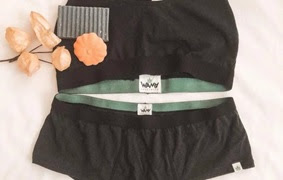Eco-Friendly Fashion: Sustainable Choices in Clothing and Textiles
Growing concern has been expressed in recent years about how fashion affects the environment. Eco-friendly fashion has significantly increased in popularity as consumers become more aware of the need for sustainability. The impact of choosing environmentally friendly clothing and textiles is discussed in this article.
The fashion industry, infamous for its destructive practices, is gradually moving toward a more sustainable strategy. As more people look for choices that reflect their beliefs in environmental responsibility, eco-friendly fashion is becoming increasingly popular. This article will discuss sustainable clothing and textile options as well as the idea of eco-friendly fashion.
Sustainable Choices in Clothing and Textiles
- Learning About Eco-Friendly Clothing
Sustainable fashion, sometimes referred to as eco-friendly fashion, refers to a variety of actions taken to lessen the adverse effects of the fashion industry on the environment and to advance moral manufacturing. As part of this, organic, recycled, or upcycled materials are used; waste and pollution are reduced; fair labor practices are encouraged; and solid and enduring designs are produced.
- Choosing sustainable and organic fibers
Using organic and sustainable fibers is a critical component of eco-friendly fashion. These fibers are cultivated without artificial fertilizers or pesticides to minimize environmental damage. Among the popular options that take less water and resources to develop are bamboo, hemp, organic cotton, and linen.
- Accepting Materials That Have Been Recycled or Upcycled
Cutting waste in the garment business creatively can be accomplished by recycling and upcycling materials. Reusing old fabrics or using polyester manufactured from recycled plastic bottles helps keep materials out of landfills and lowers the demand for new production. Upcycling is the process of repurposing used textiles or apparel into brand-new, one-of-a-kind items.
- Promoting ethical and fair trade business practices
Supporting companies that engage in fair trade and ethical business methods is crucial if we want to ensure that our fashion choices benefit society. The presence of appropriate trade certifications guarantees that garment workers are paid fairly and have a safe workplace. We can support a more equitable and sustainable fashion industry by deciding to buy from companies that place a priority on fair labor.
- Selecting Slow Fashion
Slow fashion supports making fewer purchases of higher-quality items that will last longer. This method emphasizes that clothing should be ageless and adaptable rather than relying on passing fads. We may lessen waste and the adverse effects of our fashion choices on the environment by prioritizing quality over quantity.
- Taking Part in Clothes Swaps and Used Shopping
Participating in clothes swaps or purchasing used clothing are two additional sustainable options. It is possible to trade lightly used products with friends and family, giving them a new home and extending their existence. Shopping secondhand at thrift shops or online helps lower the demand for further production and keeps apparel out of landfills.
Conclusion
The garment and textile industries may move toward a more sustainable future with the help of eco-friendly fashion. We may lessen pollution, waste, and the exploitation of labor and resources by choosing our clothing carefully. We can all do our part to create an eco-conscious wardrobe by selecting sustainable and organic fabrics, embracing recycled and upcycled materials, promoting fair trade, and partaking in slow fashion and secondhand shopping. In the end, eco-friendly clothing makes us look nice while benefiting the environment.


Browse Independent escorts and Call Girls in Ajmer from Nsibal, where you can post free adult classified ads for escorts and call girls near you.
ReplyDeleteCall Girls in Amritsar
Call Girls in Chandigarh
Call Girls in Coimbatore
Call Girls in Gandhinagar
If Your Looking For Call Girls and Escorts Services in Your City? Schloka - Free Adult classifieds in India, Browse in our call girl category To Post Ads, Book Escorts and Find Contact No For Hire Call Girls.
ReplyDeleteBorivali Call Girls
Kalyan Call Girls
Jabalpur Call Girls
Puri Call Girls
Morbi Call Girls
Looking for a reliable Female service in Jaunpur. We have top escort ads on khopal.
ReplyDeleteReliable Escort Services in Jaunpur
Reliable Escort Services in Jamshedpur
Reliable Escort Services in Jamnagar
Reliable Escort Services in Jammu
Reliable Escort Services in Jalandhar
Browse independent escorts and call girls in Moradabad from Pibilo adult classified directory in India.
ReplyDeletePibilo Escort Services in Moradabad
Pibilo Escort Services in Morbi
Pibilo Escort Services in Muzaffarnagar
Pibilo Escort Services in Muzaffarpur
Pibilo Escort Services in Mehsana
Best adult dating and free classified ads in India.
ReplyDeleteCall Girl in Rudrapur
Call Girl in Lonavala
Call Girl in Muzaffarpur
Call Girl in Faridabad
Call Girl in Bharuch
Looking for a Reliable Escorts in Chandrapur. We have top Escort ads on khopal.
ReplyDeleteEscorts in Kochi
Escorts in Aurangabad
Escorts in Akola
Escorts in Ahmedabad
Browse Independent Escorts and Call Girls in Gaya from Pibilo adult classified directory in India.
ReplyDeleteCall Girls in Gandhinagar
Call Girls in Faridabad
Call Girls in Ernakulam
Call Girls in Durgapur